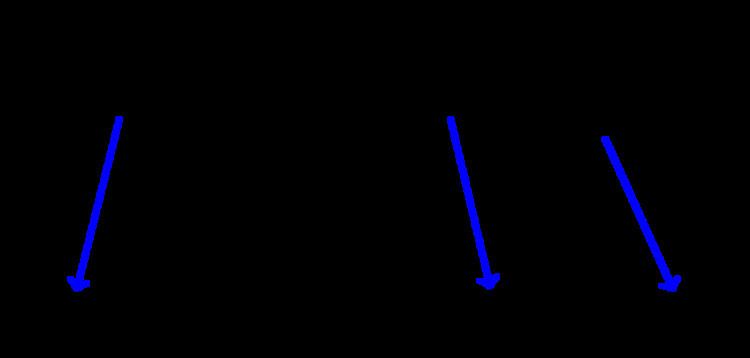 | ||
In multiphase flow in porous media, the relative permeability of a phase is a dimensionless measure of the effective permeability of that phase. It is the ratio of the effective permeability of that phase to the absolute permeability. It can be viewed as an adaptation of Darcy's law to multiphase flow.
Contents
For two-phase flow in porous media given steady-state conditions, we can write
where
Relative permeability,
where
In applications, relative permeability is often represented as a function of water saturation; however, owing to capillary hysteresis one often resorts to a function or curve measured under drainage and another measured under imbibition.
Under this approach, the flow of each phase is inhibited by the presence of the other phases. Thus the sum of relative permeabilities over all phases is less than 1. However, apparent relative permeabilities larger than 1 have been obtained since the Darcean approach disregards the viscous coupling effects derived from momentum transfer between the phases (see assumptions below). This coupling could enhance the flow instead of inhibit it. This has been observed in heavy oil petroleum reservoirs when the gas phase flows as bubbles or patches (disconnected).
Assumptions
The above form for Darcy's law is sometimes also called Darcy's extended law, formulated for horizontal, one-dimensional, immiscible multiphase flow in homogeneous and isotropic porous media. The interactions between the fluids are neglected, so this model assumes that the solid porous media and the other fluids form a new porous matrix through which a phase can flow, implying that the fluid-fluid interfaces remain static in steady-state flow, which is not true, but this approximation has proven useful anyway.
Each of the phase saturation must be larger than the irreducible saturation, and each phase is assumed continuous within the porous medium.
Approximations
Based on experimental data, simplified models of relative permeability as a function of water saturation can be constructed.
Corey-type
An often used approximation of relative permeability is the Corey correlation which is power law in the water saturation
The Corey correlations of the relative permeability of oil and water are then
when the permeability basis is oil with irreducible water present.
We note the desired properties
The empirical parameters
In case of gas-water system or gas-oil system there are Corey correlations similar to the oil-water relative permeabilities correlations shown above.
LET-type
The Corey approximation only has one degree of freedom for the oil relative permeability and two degrees of freedom for the water permeability (in
The LET-type approximation is described by 3 parameters L, E, T. The correlation for water and oil relative permeability with water injection is thus
and
written using the same
Only
In case of gas-water system or gas-oil system there are LET correlations similar to the oil-water relative permeabilities correlations shown above.
